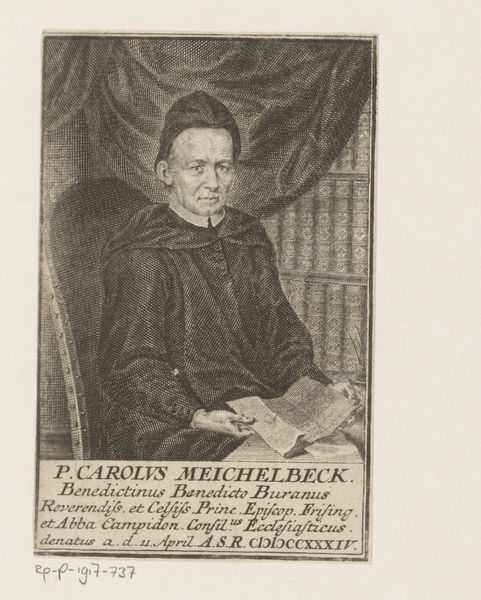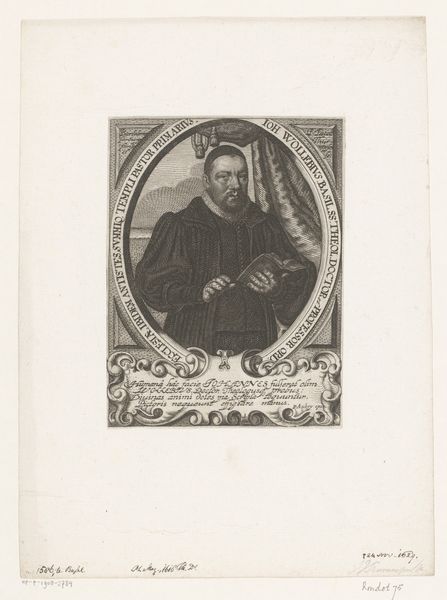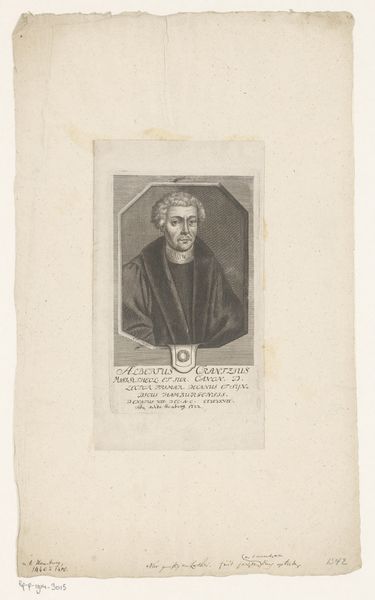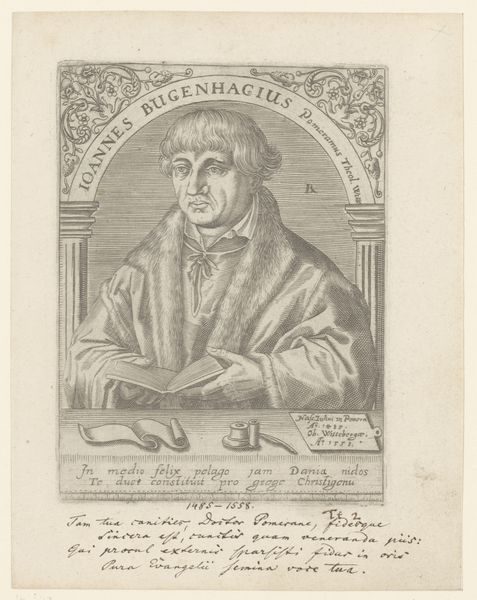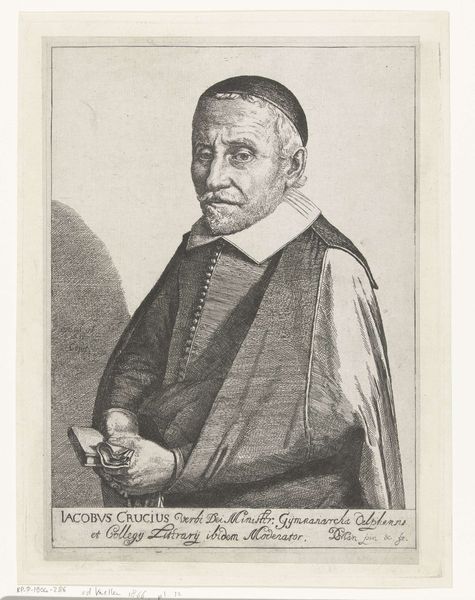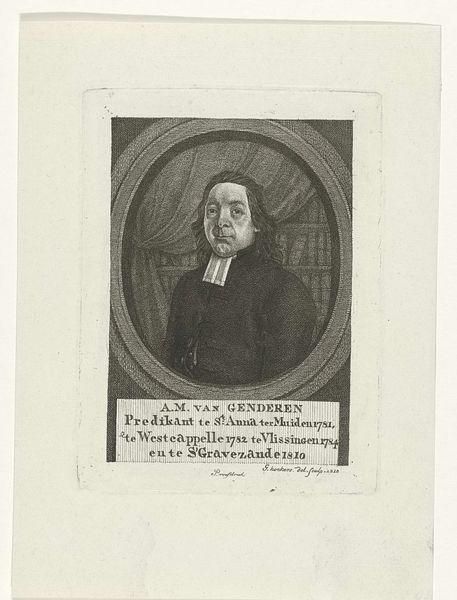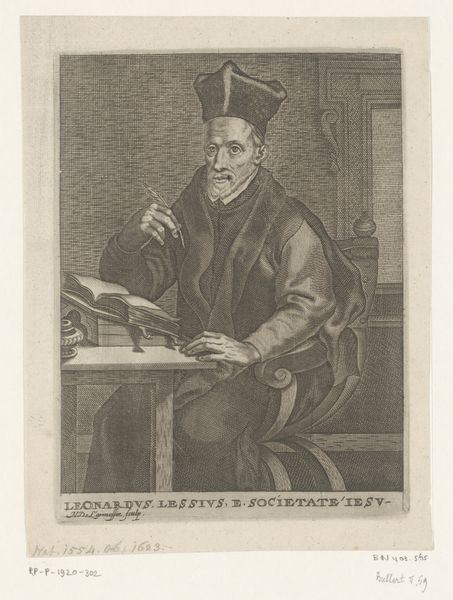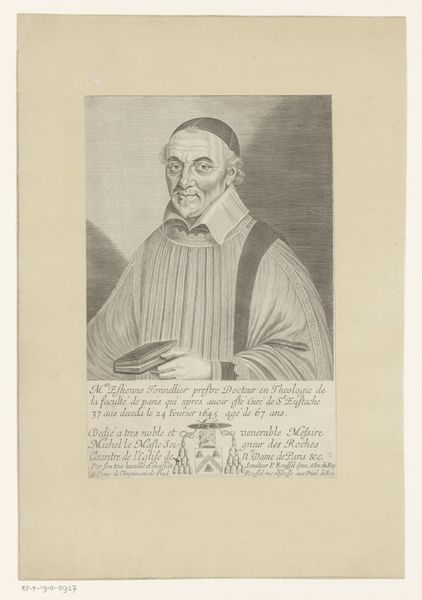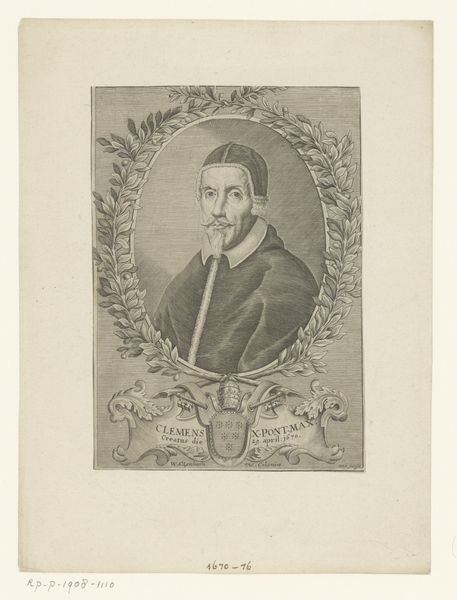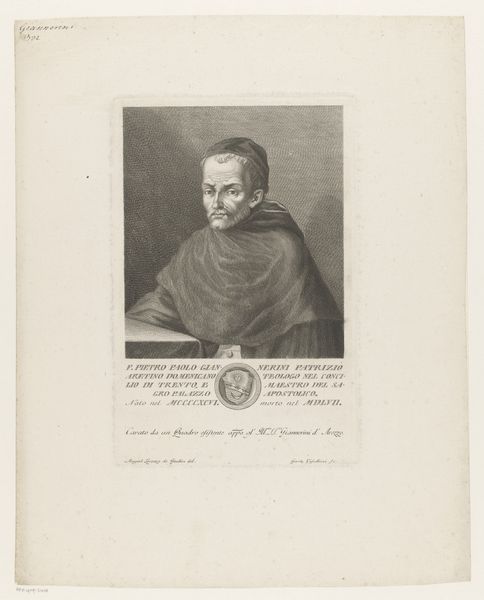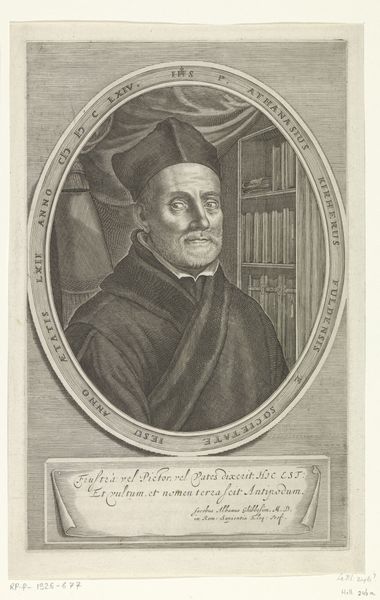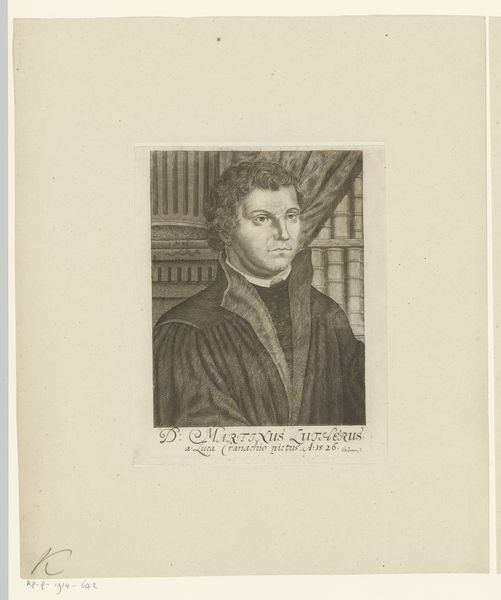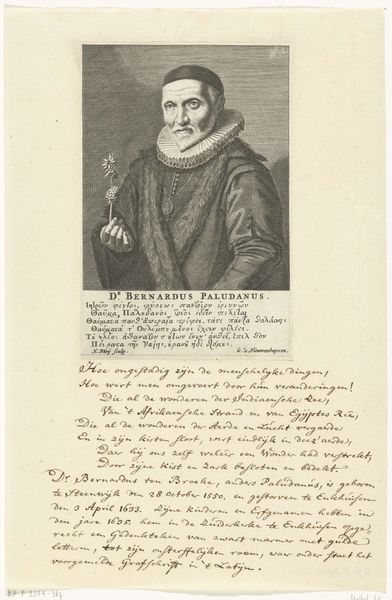
print, engraving
portrait
baroque
figuration
line
history-painting
academic-art
engraving
Dimensions: height 136 mm, width 92 mm
Copyright: Rijks Museum: Open Domain
Editor: Here we have Jacob Andreas Fridrich's "Portrait of Karl Meichelbeck," likely created between 1734 and 1751, an engraving now held at the Rijksmuseum. It’s a striking image, particularly due to the meticulous line work and detail in the sitter’s face. What do you see in this piece, especially considering its medium? Curator: From a materialist perspective, the choice of engraving itself is fascinating. Prints like this one democratized image production. Consider the labor involved: the engraver's skilled hands meticulously carving the image onto the plate, and the subsequent printing process making this portrait accessible to a wider audience than a painted portrait would have been. How does that reproducibility shift the value of the image? Editor: That's interesting! So, rather than focusing on the individual or artistic genius, we think about how prints allowed wider distribution. Does that challenge our typical view of art from this period? Curator: Absolutely. Traditional art history often prioritizes originality and authorship. But focusing on the engraving process brings the means of production to the forefront. We begin to consider the economic and social structures that enabled the creation and circulation of this image. Think about the role of the print shop, the availability of paper and ink, and the networks of distribution. All that factors into it! What effect do you think these conditions had? Editor: I guess, in a way, this challenges the art world gatekeeping since this image is way more reproducible than let's say a unique portrait. I never considered how prints and engravings complicate authorship! Thanks for highlighting the material conditions behind the creation of this image. Curator: Indeed! Seeing art through the lens of materials and production helps us understand its function within a broader social context, not just its aesthetic value.
Comments
No comments
Be the first to comment and join the conversation on the ultimate creative platform.
